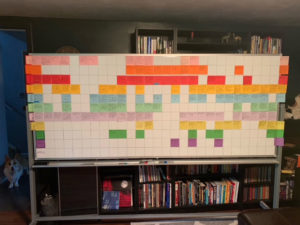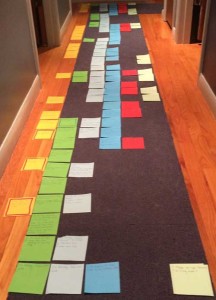Outline Like The Pros
![]() Kent has run out of stubs to work from for Untitled Ghost Novel Number One. Jen is closing in on the next batch, but until they’re available Kent had to find something else to do with his writing time. So he’s writing the prose outline for Untitled Ghost Novel Number Two.
Kent has run out of stubs to work from for Untitled Ghost Novel Number One. Jen is closing in on the next batch, but until they’re available Kent had to find something else to do with his writing time. So he’s writing the prose outline for Untitled Ghost Novel Number Two.
A prose outline is like a very detailed synopsis. But while a synopsis skips over subplots and secondary characters, the prose outline is comprehensive. The goal is to capture everything from our brainstorming notes and the plot rainbow, putting it all in order with a rudimentary narrative flow. Ours typically come in at around twenty pages.
We’ve never met anyone who likes to write synopses. They hurt. If it’s a one-pager that’s intended for use in marketing, it’ll usually be written after the manuscript is completed, and it’s painful to squash everything down so much. But the prose outline comes beforehand, and it’s painful because you have to describe a story that you haven’t really written yet. It’s sort of like a first draft. Of course, we say that about the rainbow sometimes too. And each stub is a first draft of a particular scene. Maybe a term like prototype, or proof-of-concept, would be more apt for these pre-writing artifacts.
A writing partner is someone who writes the prose outline, when he’s done procrastinating by writing about writing the prose outline.


